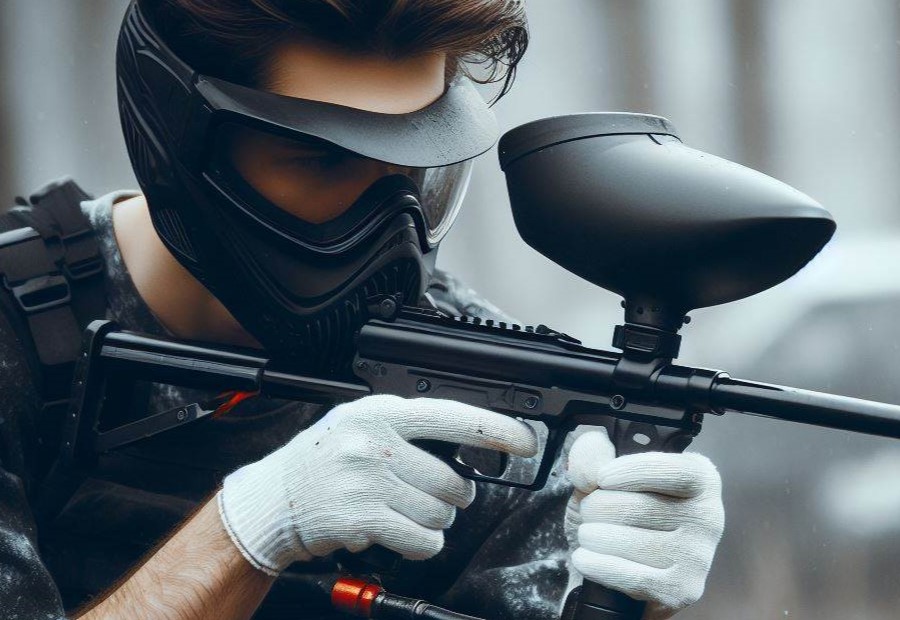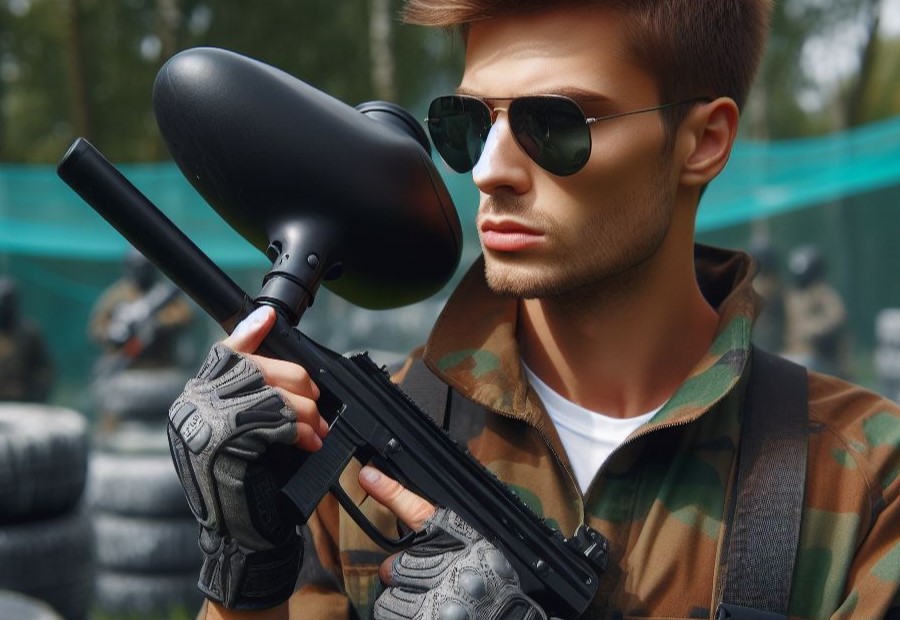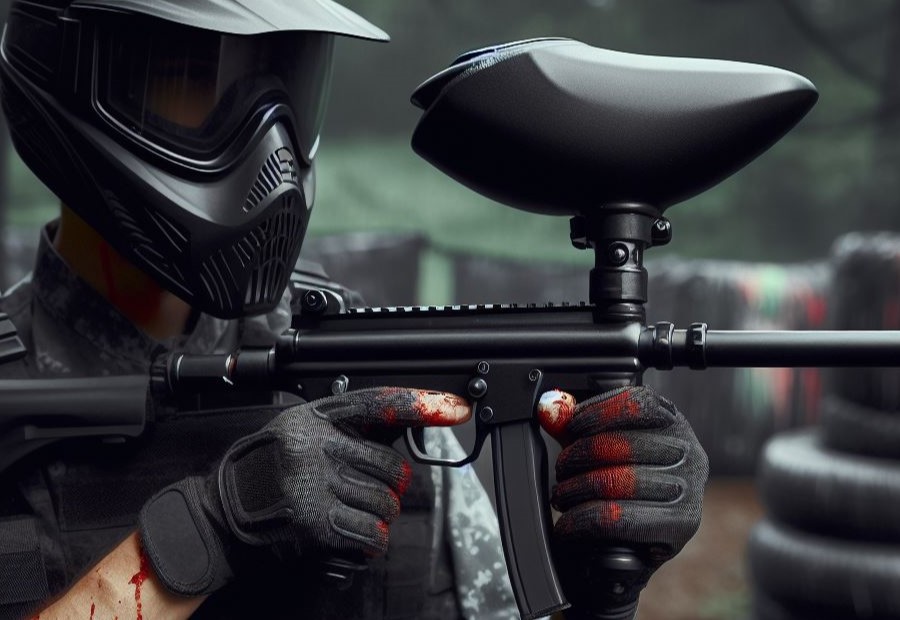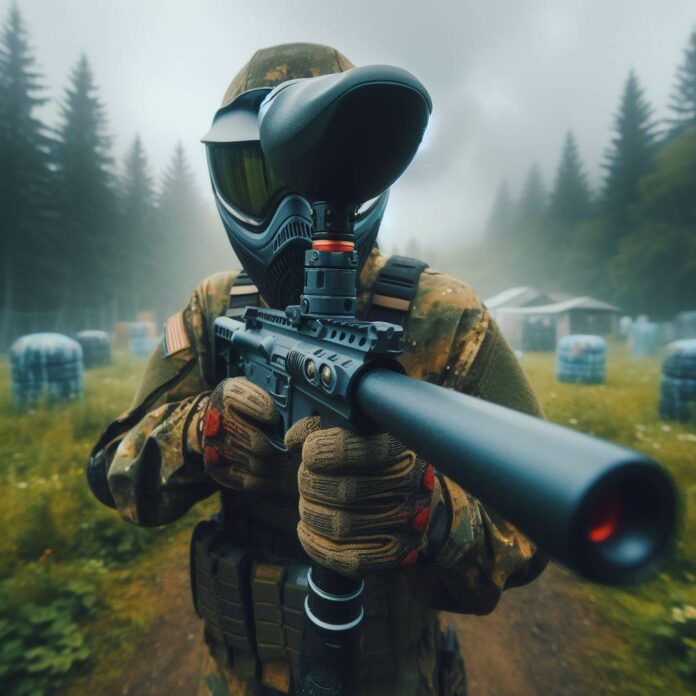Paintball guns are a crucial component of the popular sport of paintball, providing players with the means to shoot paint-filled pellets at each other during matches.
But among the wide array of options available, which can be considered the fastest paintball gun? Before diving into the details, it is important to understand the purpose of a paintball gun.
Paintball guns are designed to propel paintballs at high speeds, accurately hitting targets during gameplay. The speed at which the paintballs are shot is measured in Feet per Second (FPS).
Various factors influence the speed of a paintball gun, including air pressure, barrel length, bolt design, and the type of paintballs used.
Understanding these factors can help paintball enthusiasts make an informed decision when selecting a paintball gun.
To further enhance the speed of a paintball gun, certain tips can be followed. Upgrading the air system, choosing the right barrel, and selecting the appropriate paintballs are some of the strategies that players can employ to increase the speed of their paintball guns.
What is the Purpose of a Paintball Gun?

Paintball guns serve a specific purpose – to engage in the thrilling sport of paintball. These guns are designed to shoot paint-filled capsules that burst upon impact, marking opponents as “eliminated” from the game.
The primary function of a paintball gun is to enable players to participate in a team-based, strategic, and competitive sport.
These guns act as the main tool for players, allowing them to accurately hit their opponents.
They play an essential role in ensuring a fair and balanced playing field, as they enable players to deliver paint projectiles at a controlled velocity.
The purpose of a paintball gun is to provide excitement, challenge, and enjoyment for players within a safe and regulated environment.
It provides players with a versatile tool that allows them to compete, strategize, and effectively communicate with their teammates.
These guns promote teamwork, facilitate the development of tactical skills, and offer an adrenaline-filled adventure for players of all ages and skill levels alike.
Always remember to prioritize safety and play responsibly to ensure a memorable and enjoyable paintball experience.
Understanding Paintball Gun Velocity
Understanding paintball gun velocity is crucial when it comes to both safety and performance in the game.
Paintball guns propel small paint-filled capsules at high speeds, and the velocity at which these paintballs are launched can have a significant impact on their accuracy and force of impact.
Typically, the velocity of a paintball gun is measured in feet per second (fps). To ensure the safety of players, most paintball fields establish a maximum velocity limit, usually around 280-300 fps. Going beyond this limit can increase the risk of injuries.
It’s important to note that higher velocity does not necessarily guarantee better performance. Although a faster paintball can cover greater distances, it can also cause more discomfort upon impact.
For optimum accuracy, the ideal velocity ranges between 270-280 fps, striking a balance between distance and impact force.
What is FPS in Paintball?
FPS, which stands for Feet Per Second, is a crucial unit of measurement in the context of paintball. It determines the speed at which a paintball gun propels paintballs, indicating how fast the paintball travels from the barrel of the gun to its target.
Adjustable velocity settings on paintball guns regulate the FPS, allowing players to control the speed at which the paintball travels.
The higher the FPS, the greater the impact, as the paintball moves at a faster pace. However, it’s important to note that there are regulations and limitations in place regarding the maximum speed allowed in paintball.
Understanding FPS is of utmost importance in paintball for several reasons. Firstly, it directly affects the accuracy of the shot.
While a higher FPS can increase the distance and velocity of the paintball, it may also compromise accuracy.
Secondly, FPS determines the force and impact of the paintball upon contact, which significantly influences the player’s experience and safety.
Factors Affecting Paintball Gun Speed

Air Pressure
When considering factors that affect paintball gun speed, one important aspect to consider is air pressure.
The air pressure within the gun’s tank has a direct impact on the velocity at which the paintballs are propelled.
Higher air pressure results in increased velocity, while lower pressure will reduce the speed of the paintballs.
Paintball guns typically have a recommended air pressure range specified by the manufacturer, which should be followed to ensure optimal performance.
It is crucial to regularly check and maintain the air pressure in your paintball gun to ensure consistency and accuracy in your shots. Using a pressure gauge, you can monitor the air pressure level and make adjustments as needed.
In some cases, players may choose to adjust the air pressure to achieve different shooting characteristics.
Increasing the pressure can lead to faster shots with flatter trajectories, while reducing the pressure can offer more control and accuracy.
However, it is important to note that any adjustments to air pressure should be done within the manufacturer’s recommended limits.
Exceeding these limits can lead to safety concerns and may cause damage to the paintball gun.
By understanding and effectively managing the air pressure in your paintball gun, you can optimize its performance and ensure a better overall gaming experience.
Barrel Length
| Barrel Length | Impact on Paintball Gun Speed |
| Shorter Barrel | A shorter barrel typically results in a higher paintball gun speed. The length of the barrel has an effect on the velocity of the paintball being fired.
When the barrel is shorter, the compressed air has less time to exert pressure on the paintball, allowing it to exit the barrel at a higher velocity. However, it’s important to note that a shorter barrel may sacrifice accuracy because it provides less stabilization for the paintball during its trajectory. |
| Longer Barrel | The increased length of the barrel enables the paintball to obtain a more consistent flight path, improving its accuracy. However, a longer barrel may slightly decrease the paintball gun speed.
This is because the compressed air has more time to lose pressure before propelling the paintball, resulting in a slightly lower velocity. It’s important to note that the impact on speed is generally minimal and may not be noticeable in most situations. |
Bolt Design
When considering bolt design for paintball guns, there are several important factors to keep in mind:
- Bolt weight: The weight of the bolt can greatly influence the speed and efficiency of the paintball gun. Opting for lighter bolts can boost the speed of the paintball, while heavier bolts might provide enhanced stability and accuracy.
- Bolt shape: The shape of the bolt plays a significant role in the airflow and propulsion of the paintball. Certain bolt designs are specifically crafted for optimum speed, while others prioritize recoil reduction and efficiency improvement.
- Bolt materials: The choice of materials for the bolt can significantly impact its durability and performance. To ensure optimal performance and longevity, it is commonly recommended to use high-quality materials like aluminum or composite alloys.
- Bolt dwell: The dwell time of the bolt refers to the duration it remains in the forward position before retracting to the rear position. Adjusting the dwell time can alter the speed and force at which the paintball is fired.
To enhance bolt design and maximize the performance of your paintball gun, consider the following suggestions:
- Upgrade to a lightweight bolt to experience increased speed.
- Experiment with different bolt shapes to find the one that best suits your playing style.
- Choose a bolt made from high-quality materials to ensure durability and top-notch performance.
- Adjust the dwell time to strike an ideal balance between speed and efficiency.
Paintball Types
| Type | Description |
| Recreational | Designed for casual players and beginners. These paintballs are affordable and have a thicker shell for durability during gameplay. |
| Tournament | Designed for competitive players participating in organized tournaments. These paintballs have a thin shell for increased accuracy and break on impact. |
| Military Simulation | Designed to mimic military scenarios and equipment. These paintballs often have unique colors, shells, and markings to enhance the realism of gameplay. |
| Training | Designed for training purposes, such as law enforcement or military training. These paintballs are typically made with biodegradable materials and have a reduced impact for safety. |
Understanding the different paintball types allows players to choose the most suitable option based on their preferences and the style of gameplay they engage in.
Regulations and Limitations
| Regulations | Limitations |
| All paintball guns used in official tournaments must adhere to specific regulations set by the governing bodies. | There are limitations on the speed, firing rate, and mode of operation of paintball guns. |
| The maximum velocity allowed for paintball guns is usually around 300 feet per second (fps). | Players are not allowed to modify their guns to exceed the set speed limit. |
| Players must also abide by strict safety rules and wear appropriate protective gear during games. | Using paintball guns in unauthorized areas or without proper supervision is prohibited. |
| Paintball guns should be used responsibly, and any intentional harm caused by misuse is strictly against regulations. | The number of paintballs a player can carry at one time may be limited to ensure fair gameplay. |
| Teams and players must follow the designated playing fields and respect the boundaries and rules set by the organizers. | There may be restrictions on the types of paintball guns that can be used in different game formats or scenarios. |
What is the Maximum Speed Limit for Paintball Guns?
The maximum speed limit for paintball guns is an important consideration for the safety of players and the integrity of the game. Here are some key points about the maximum speed limit:
- The maximum speed limit for paintball guns is typically measured in feet per second (FPS).
- Most paintball fields have a maximum speed limit of 280 FPS.
- This limit ensures that paintballs are traveling at a safe speed to minimize the risk of injury.
- Exceeding the maximum speed limit can result in penalties or being disqualified from the game.
- Paintball guns should be chronographed regularly to ensure they are within the allowed speed limit.
It is important for players to follow the maximum speed limit to maintain a safe and enjoyable playing environment. Adhering to the limit helps prevent accidents and promotes fair competition in paintball games.
Tips for Increasing Paintball Gun Speed

Upgrading Your Air System
To upgrade your air system for your paintball gun and optimize its performance, follow these steps:
- Research: Begin by conducting thorough research on the different types of air systems available for paintball guns. You can find valuable insights from reviews and recommendations shared by experienced players.
- Determine your budget: Set a clear budget based on your financial capabilities to facilitate the upgrading process.
- Choose the right tank: Give serious consideration to acquiring a high-pressure air (HPA) tank, as it provides superior consistency and performance compared to carbon dioxide (CO2) tanks.
- Check tank capacity: Ensure that the air tank you select has a suitable capacity to align with your style of play and the duration of your games. Common sizes range from 48 to 68 cubic inches.
- Consider regulator: Enhance your air pressure control and consistency by upgrading to a high-quality regulator.
- Inspect fittings and hoses: Conduct a thorough inspection to identify any worn-out or damaged fittings and hoses. If necessary, replace them promptly to ensure proper air flow and prevent any potential leaks.
- Consult with experts: Seek advice and guidance from experts at your local paintball store or talk to experienced players if you have any uncertainties or require assistance with upgrading your air system.
- Follow manufacturer instructions: Remember to adhere to the manufacturer’s instructions when installing or replacing components of your air system. This will guarantee proper installation and ensure safety.
Choosing the Right Barrel
When choosing the right barrel for your paintball gun, there are several factors to consider:
| Factor | Importance |
|---|---|
| Diameter | Affects the accuracy and efficiency of the paintball gun. A tighter bore diameter can provide increased accuracy, while a wider bore diameter can accommodate larger paintballs. |
| Length | The length of the barrel can affect the distance and velocity of the paintball. A longer barrel can increase the velocity, but may sacrifice maneuverability. |
| Material | The material of the barrel can impact the overall weight and durability of the paintball gun. Aluminum and carbon fiber barrels are popular choices for their lightweight and sturdy nature. |
| Rifling | Some barrels come with rifling, which are spiral grooves on the inside of the barrel. Rifling can help stabilize the paintball in flight, improving accuracy. |
| Porting | Porting refers to the presence of holes or vents on the barrel. It can reduce the noise and muzzle rise of the paintball gun, enhancing control during rapid firing. |
Considering these factors and understanding your own playing style can help you choose the right barrel for your paintball gun.
Experimenting with different barrels and seeking advice from experienced players can also be beneficial in finding the perfect fit for your needs.
Choosing the Right Paintballs
When it comes to choosing the right paintballs for your paintball gun, there are a few factors to consider:
- Quality: Look for paintballs that are made from high-quality materials and have a smooth, round shape. This will ensure better accuracy and reduce the risk of barrel breaks.
- Size: Paintballs come in different sizes, typically ranging from .68 caliber to .50 caliber. The most common size is .68 caliber, but make sure to check your paintball gun’s specifications to ensure compatibility.
- Shell thickness: The thickness of the paintball shell can affect how easily it breaks upon impact. Thinner shells are more likely to break upon impact, while thicker shells can withstand rougher play.
- Filling: Consider the type of fill inside the paintballs. Some paintballs have a water-based fill, while others have an oil-based fill. Water-based fills are more environmentally friendly, but oil-based fills tend to leave more noticeable marks.
- Color: Choose paintballs with vibrant colors that are easy to see on the field. This will help you track your shots and assess your accuracy.
Ultimately, the right paintballs for you will depend on your playing style, field conditions, and personal preferences. It’s always a good idea to try out different brands and types of paintballs to find the ones that work best for you.
Factors to Consider When Choosing a Paintball Gun
When choosing a paintball gun, there are several factors to consider:
- Performance: Consider the power and accuracy of the gun. Look for a gun with a high FPS (feet per second) rating, as this will ensure your shots reach your target with speed and precision.
- Price: Determine your budget and choose a paintball gun that fits within that range. Consider both the upfront cost of the gun and any additional accessories or upgrades you may need.
- Style: Decide on the type of paintball gun you prefer, such as a mechanical or electronic marker. Consider factors like ease of use, maintenance requirements, and customization options.
- Weight and Size: Consider the weight and size of the gun. A lighter and more compact gun will be easier to handle and maneuver on the field.
- Compatibility: Check if the gun is compatible with the type of paintballs you plan to use. Different guns may have specific requirements for the size and type of paintballs they can shoot.
- Reliability: Research the reputation and reviews of the paintball gun and its manufacturer. Look for a gun that is known for its durability and reliability.
- Upgradability: Consider if the gun allows for future upgrades or modifications. This can be important if you plan to enhance your gun’s performance or customize it to your liking.
- Safety: Ensure that the paintball gun has appropriate safety features, such as a locking mechanism or safety switch, to prevent accidental firing.
Importance of Safety and Responsible Use
The importance of safety and responsible use cannot be overstated when it comes to paintball guns. Safety should always be the top priority when engaging in this recreational activity.
- Protective Gear: It is crucial to always wear protective gear, including a mask, padding, and proper clothing. These items are designed to protect you from injury and should be worn at all times during a game.
- Adhering to Rules: Make sure to follow all rules and regulations set by the paintball facility. These rules are put in place to ensure the safety of all players and should be respected.
- Consideration for Others: Be mindful of other players on the field. Avoid shooting at close range or aiming for sensitive areas of the body. Show respect and consideration for your fellow players at all times.
- Maintaining Equipment: Regularly inspect and maintain your paintball gun to ensure it is in good working condition. Always use proper and approved paintballs to prevent any issues or malfunctions.
- Communication: Effective communication is essential during a game. Use clear and concise signals to communicate with your teammates and avoid confusion or potential accidents.
Frequently Asked Questions
What is the fastest paintball gun?
The fastest paintball guns on the market include the Empire Paintball Mini GS and the Planet Eclipse GTEK 170R.
These guns offer impressive speed and performance, making them great options for players looking for a competitive edge.
What is the effective range of a paintball gun?
The effective range of a paintball gun is typically around 80-100 feet. Beyond this range, the paintballs may not break upon impact.
It is important to consider the effective range when aiming at targets in order to ensure a successful hit.
How many paintballs can a gun shoot per second?
The number of paintballs a gun can shoot per second depends on the type of gun and how fast the trigger can be pulled.
On average, paintball guns can fire 5-6 shots per second. Some high-end guns may have burst capabilities and be able to shoot at higher rates of fire.
What is the safe shooting range in paintball?
The safe shooting range in paintball is generally considered to be 10 feet or more.
It is considered etiquette to give opponents the opportunity to surrender at close range to avoid unnecessary injuries. Safety should always be a top priority during paintball games.
What are some recommended paintball guns for intermediate players?
For intermediate players, some recommended paintball guns are the Valken M17 Magfed, Tippmann A-5, and Dye Rize CZR.
These guns offer a good balance of performance, accuracy, and ease of use, making them suitable for players looking to level up their game.
What factors should be considered when purchasing a paintball gun?
When purchasing a paintball gun, it is important to consider factors such as price, caliber (with .68 being the standard), ease of maintenance and repair, electronic vs. mechanical operation, and the type of paintball you want to play.
Additionally, it is important to budget for protective gear to ensure safety during gameplay.

